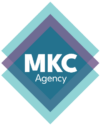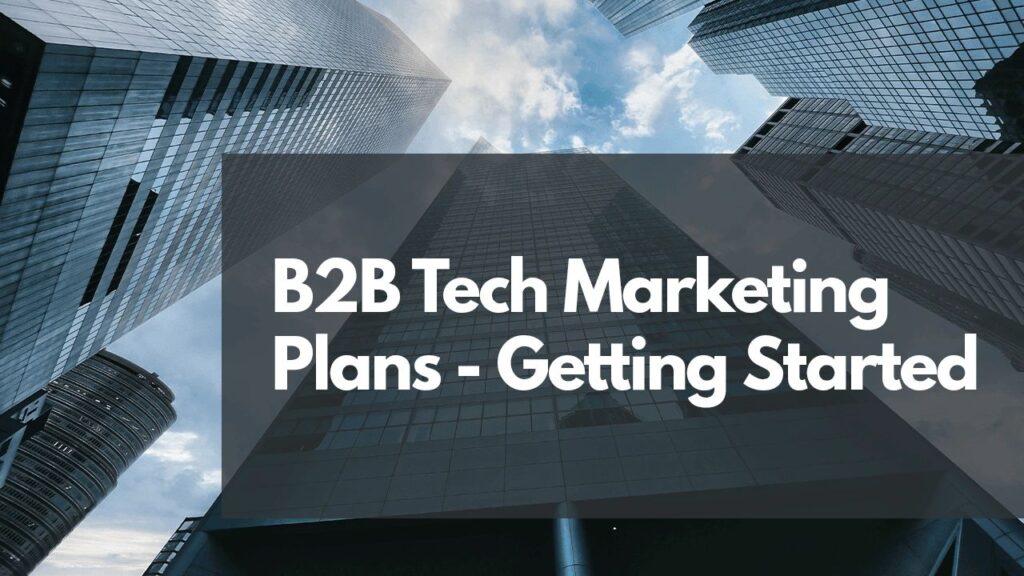If you’re not a B2B tech startup, you’re not in the right class. You want to go down the hall to Mrs. Beezman’s class. We’ll wait.
Ok, so if you ARE a B2B tech company, and you are looking to grow your business through digital marketing, this plan is a good place to start.
It’s packed with the guidelines you need to build an effective digital marketing strategy so you can be on your way to developing new client relationships and nurturing existing ones.
Let’s get started with the first step: planning.
Marketing Strategy for B2B Technology Firms
In B2B tech marketing, as in most things, the best place to start is by crafting a clear strategy. Having a solid, intelligent strategy in place will keep your tactics aligned with your marketing goals and drive you in the right direction.
Traditionally, B2B marketing has been all about relationships–many B2B tech firms have grown primarily on the basis of relationship marketing. There is an important distinction to make here: if you’re in a newer subsection of the tech space, like SaaS (Software as a Service), this may not apply to you – but if you’re in a more developed space like specialized manufacturing or technology integration, it almost certainly does.
It makes total sense that B2B tech firms, whose nature is anchored in serving other businesses with high-value service items, tend to have a high percentage of referral-based sales. Connections and referrals often make up a large slice of the pie, so to speak.
However, that kind of lop-sided marketing strategy only serves to highlight how few B2B tech firms truly use online marketing well – and, by the same token, how much opportunity is out there for smart B2B tech firms to use online marketing as a golden opportunity to grow their business.
With that said, let’s break down the core of marketing strategy for B2B tech firms. A solid, well-developed strategy should revolve around four key stages: awareness, convert, close, and delight.
Let’s take a look at each phase and list the activities that are best suited to support it.
Awareness
- Blogging
- SEO
- Social Media
- PPC
- Networking
Convert
- Landing Pages
- Content
- Call-to-actions
- Forms
Close
- Email Marketing
- CRM
- Automation
Delight
- Email Marketing
- Social Media
- Surveys
Let’s dive in, shall we?
The Awareness Phase
The Awareness Phase is just what it claims to be–making people aware of your business. It is getting on the map and getting attention. It’s all about getting your business’s name out there.
Sadly, many tech organizations are struggling to master this space – which is a crying shame because this is easily the most critical area of the entire funnel since it’s the engine driving every other stage.
Trying to market without awareness is like trying to build a train without an engine.
The truth is, you need traffic and contacts to make your marketing run. Without good awareness, you’ll never have enough opportunities to leverage for growth in your company. Being invisible is a death sentence for a business.
Boiled down to its most basic level, this stage is about making your potential customer aware of your business. There are various ways to do this, but we’re going to stick to the simple ones that don’t involve a chicken suit and a cowbell.
Tactics like blogging, SEO optimization, networking, PPC (pay per click advertising), and social media campaigns are effective, tried, and tested methods of marketing online that we have used extensively in our 15 years in the B2B tech marketing space.
The Convert Phase
Ok, so you’ve nailed the Awareness Phase, and you now have traffic to your website. People know you exist–what’s next? The next phase is to convert that traffic into potential customers (AKA lead conversions). This is the essence of the convert phase. Now, time for the big question: how exactly do you do that?
Most people think of websites as having one central call-to-action (or CTA, as we marketing nerds call them); usually, this is the “Contact Us” page, with a big colorful button for people to click and get in touch with you. This is great for customers primed to do business right now – but unfortunately, that’s only maybe 1 out of every 1000 visitors to your site. Yikes.
So, what do you do with the other 999 visitors?
The answer is all about keeping them engaged until they are ready to commit. Engage them where they are with high-quality content that helps to solve a current problem they have. Identify possible pain points and then offer solutions in the form of informative blog posts, a solution-centric landing page, a targeted whitepaper or relevant ebook, etc. Your ultimate goal is to offer something helpful in exchange for information from the prospect. For example, if you are a managed services provider, you might have a downloadable Cybersecurity Policy Template. Potentially interested readers get a valuable PDF full of help, and now you have one more potential client on your contact list. Brilliant!
The key to success in this is to create conversion points for each offer you have. In other words, give anyone interested in doing business with you an opportunity to learn more before fully committing. You can convert 2-5% of all visitors to your site with relative consistency if this is done well.
This, my friends, is the secret to creating lasting results in online marketing.
The Close Phase
You’ve heard of ABC (Always Be Closing). Most of the closing phase happens on the phone and in the meeting room. When a client reaches out to you for a proposal or conversation, digital marketing might not come into play immediately – but don’t write it off just yet.
You’ll still be doing a good bit of email marketing during the closing phase. This might be through case studies or samples of your work to further drive the point home and showcase what you have to offer.
Truth time: you need to put as much effort into those emails as you would put into your outreach emails. This is the home stretch, don’t slow down!
You will need a solid proposal template, an excellent presentation template (we use Canva), and the savvy to work a presentation in the close phase. But your emails and social media content can also lend a hand when it comes to closing deals.
The Delight Phase
Hallelujah–you now have a new client! Your work isn’t done; your marketing just enters a different phase once a lead becomes a client. You still have to present a solid marketing effort to your clients to retain them and keep them happy.
For most B2B firms, longtime clients and referrals are important to your long-term success. Happy clients will tell others and might make the right connection for you in the future. A satisfied client will pay off tenfold for your business.
Email marketing in this phase can be used in varying degrees depending on your vision and audience. You might have a bi-weekly or monthly newsletter that keeps them updated on your latest innovations, services, and products. This can play a large role in validating your expertise in the midst of changing tech landscapes.
And, of course, you’ll use personal emails to connect with clients periodically to build relationships. The key here is to keep in touch and make your email interactions personalized to your client so they know you care about them.
I hope this guide was helpful and the jump-start you needed to get your B2B tech marketing strategy off to a great start.
Do you have more questions, or need a hand building out an effective digital marketing framework for your business? Megan Killion Consulting is an experienced marketing team with the expertise and know-how to help you develop your ideal customer profile and meet your B2B marketing goals. Book a chat today to get started on addressing your unique business needs and how we could help move your brand forward together.

